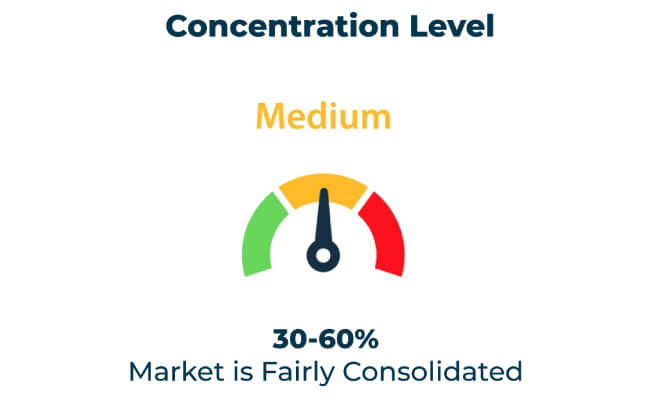The medical specialty bag market is growing steadily, driven by rising healthcare needs, increasing chronic diseases, and advancements in medical technologies. Specialty bags, including IV bags, ostomy bags, and blood bags, are essential for efficient patient care and medical procedures.
By 2035, the global market for medical specialty bags is projected to reach USD 9.94 billion, growing at a compound annual growth rate (CAGR) of 4.7%. Key trends include the adoption of eco-friendly materials, innovations in bag designs, and increasing demand in emerging markets.
| Attribute | Details |
|---|---|
| Projected Value by 2035 | USD 9.94 billion |
| CAGR during the period 2025 to 2035 | 4.7% |
Manufacturers are focusing on biocompatible materials, lightweight designs, and enhanced functionality to address patient and healthcare provider needs. Collaboration with medical institutions ensures alignment with industry regulations and standards.
Factors Driving Market Growth
The medical specialty bag market is expanding due to growing healthcare expenditures, technological advancements, and the rising prevalence of chronic conditions. Stringent regulatory requirements further support the adoption of high-quality bags.
| Category | Market Share (%) |
|---|---|
| Top 3 Players (Baxter, Fresenius, Coloplast) | 19% |
| Rest of Top 5 Players (Hollister, B. Braun) | 5% |
| Next 5 of Top 10 Players | 13% |
Type of Player & Industry Share (%)
| Type of Player | Market Share (%) |
|---|---|
| Top 10 Players | 37% |
| Next 20 Players | 25% |
| Remaining Players | 38% |

Year-on-Year Leaders
Emerging markets in Asia-Pacific, Africa, and South America present significant growth potential. Affordable and scalable medical specialty bag solutions are in high demand in these regions.
In-House vs. Contract Manufacturing
| Region | North America |
|---|---|
| Market Share (%) | 35% |
| Key Drivers | High healthcare spending and regulatory compliance. |
| Region | Europe |
|---|---|
| Market Share (%) | 30% |
| Key Drivers | Focus on sustainability and medical innovations. |
| Region | Asia-Pacific |
|---|---|
| Market Share (%) | 25% |
| Key Drivers | Rapid healthcare expansion and infrastructure development. |
| Region | Other Regions |
|---|---|
| Market Share (%) | 10% |
| Key Drivers | Rising demand for affordable healthcare solutions. |
The medical specialty bag market will grow through advancements in materials, smart technologies, and sustainable practices. Companies investing in eco-friendly solutions, smart monitoring systems, and automation will lead the industry. Energy-efficient production processes will further optimize costs and environmental impact.
| Tier | Key Companies |
|---|---|
| Tier 1 | Baxter, Fresenius, Coloplast |
| Tier 2 | Hollister, B. Braun |
| Tier 3 | Convatec, Medline, Macopharma |
The medical specialty bag market is poised for growth, driven by advancements in material science, rising healthcare needs, and sustainability trends. Companies investing in eco-friendly solutions, smart technologies, and biocompatible materials will secure a competitive edge in this dynamic market.
Key Definitions
Abbreviations
Research Methodology
This report relies on primary research, secondary data analysis, and market modeling. Insights were validated through consultations with industry experts.
Market Definition
The medical specialty bag market includes high-quality, sustainable, and biocompatible solutions for patient care and medical waste management, addressing safety, efficiency, and environmental concerns.
The market is driven by increasing healthcare needs, advancements in medical technologies, and rising demand for sustainable and biocompatible products.
the global market for medical specialty bags is projected to reach USD 9.94 billion, growing at a compound annual growth rate (CAGR) of 4.7%.
Key players include Baxter, Fresenius, and Coloplast, known for their innovative and high-quality medical specialty bags.
Challenges include high production costs, regulatory compliance, and material limitations for biodegradable options.
Opportunities lie in technological advancements, increasing demand in emerging markets, and the adoption of eco-friendly materials.






Full Research Suite comprises of:
Market outlook & trends analysis
Interviews & case studies
Strategic recommendations
Vendor profiles & capabilities analysis
5-year forecasts
8 regions and 60+ country-level data splits
Market segment data splits
12 months of continuous data updates
DELIVERED AS:
PDF EXCEL ONLINE
Medical Exoskeleton Market Forecast Outlook 2025 to 2035
Medical Display Market Forecast and Outlook 2025 to 2035
Medical Spa Market Size and Share Forecast Outlook 2025 to 2035
Medical Face Shield Market Forecast and Outlook 2025 to 2035
Medical Robot Market Size and Share Forecast Outlook 2025 to 2035
Medical Nutrition Market Forecast and Outlook 2025 to 2035
Medical Wax Market Size and Share Forecast Outlook 2025 to 2035
Medical Plastics Market Size and Share Forecast Outlook 2025 to 2035
Medical Device Tester Market Size and Share Forecast Outlook 2025 to 2035
Medical Device Trays Market Size and Share Forecast Outlook 2025 to 2035
Medical Adhesives Market Size and Share Forecast Outlook 2025 to 2035
Medically Supervised Weight Loss Services Market Size and Share Forecast Outlook 2025 to 2035
Medical Smart Drug Cabinet Market Size and Share Forecast Outlook 2025 to 2035
Medical EMR Input Device Market Size and Share Forecast Outlook 2025 to 2035
Medical Anti-Decubitus Air Mattress Market Size and Share Forecast Outlook 2025 to 2035
Medical Gas Analyzers Market Size and Share Forecast Outlook 2025 to 2035
Medical Biodegradable Magnesium Alloy Market Size and Share Forecast Outlook 2025 to 2035
Medical Holography Market Size and Share Forecast Outlook 2025 to 2035
Medical Antiseptics Market Size and Share Forecast Outlook 2025 to 2035
Medical Implants Precision Machining Service Market Size and Share Forecast Outlook 2025 to 2035

Thank you!
You will receive an email from our Business Development Manager. Please be sure to check your SPAM/JUNK folder too.
Chat With
MaRIA